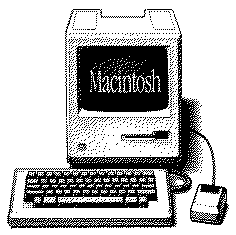|
|
|
|
|
|
|
68k Macintosh Locator |
|
|
| |

|
Macintosh Computer
|
Macintosh Periphery
|
Apple II Computer
|
|
|
|
|
|
|
| |
|
 |
|
|
|
 |
 |
|
 |
|
|
· myoldmac.net · Vintage Apple Macintosh Computer · |
|
|
 |
|
Apple Power Mac G4 Cube
The Power Mac G4 Cube was a small form factor Macintosh personal computer from Apple Inc. It was sold from 2000 to 2001. Its cube shape is reminiscent of the NeXTcube from NeXT, acquired by Apple in 1996. The machine was designed by Apple industrial designer Jonathan Ive.
The New York Museum of Modern Art holds a G4 Cube, along with its distinctive Harman Kardon transparent speakers, as part of its collection. |
Apple targeted the Cube at the market between the iMac G3 and the Power Mac G4. Despite its innovative design, critics complained that it was too expensive. It was initially priced US$200 higher than the comparably-equipped and more-expandable base Power Mac G4 of the time (450 MHz CPU, 64 MB RAM, 20 GB hard drive) and did not include a monitor, thus leading to slow sales. Additionally, early Cubes suffered from a manufacturing issue that led to faint lines (referred to as "cracks" or "mold lines") in the clear plastic case. This was often considered damaging to the aesthetic quality of the computer.
After seeing low profits, Apple attempted to increase sales by bundling more software with the Cube,[citation needed] lowering the price of the base model, incorporating a CD-RW drive standard for the 500 MHz version, and offering an improved Nvidia graphics card as an option. These efforts could not offset the earlier perception of reduced value compared to the iMac and Power Mac G4 lineup. In July 2001 Apple issued a short and slightly unusual press release announcing the product was to be put "on ice".
In 2003, the G4 Cube received a brief return to the spotlight after a series of articles in Wired charted its cult popularity. The articles, focusing on upgrades installed by individual users and retailers such as Kemplar, led to a sharp rise in the Cube's resale value. Nevertheless, with the release of the relatively inexpensive Mac Mini (seen by some[4] as a replacement), coupled with Apple's switch to G5 processors and eventually Intel Core-based processors, the Cube again faded into the background.
Related Links : wikipedia.org - lowendmac.com |

 |
 |
 |
 |
 |
|
|
|
 |
|
|

![]()